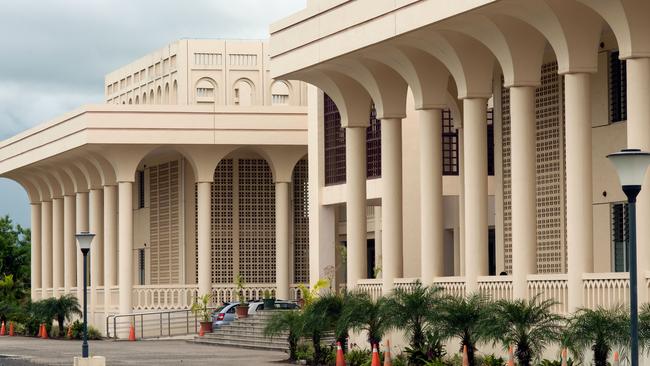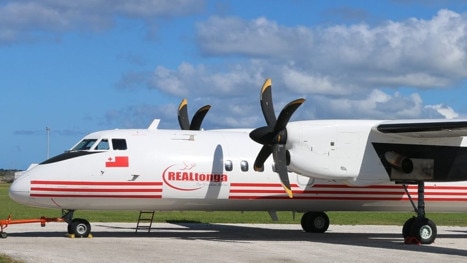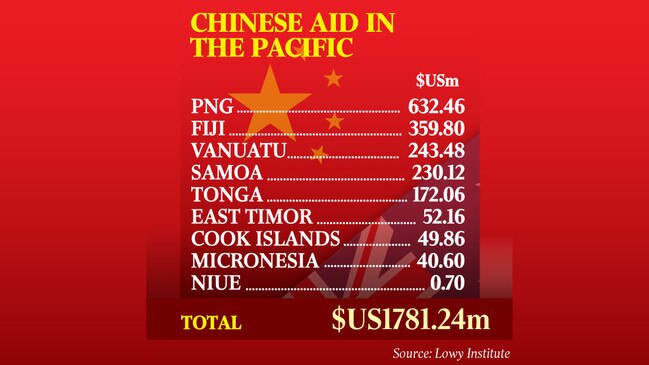Chinese aid doesn’t always help, Pacific nations find
Chinese donations to South Pacific nations have often been marred by poorly built and long-delayed projects.

South Pacific island nations have shared in billions of dollars in Chinese aid and discounted loans over the past decade, but donations have often been marred by problems including poorly built and long-delayed projects and have even included the gift of an allegedly dangerous 55-seater aircraft.
In the Samoan capital, Apia, China built a $26.7 million courthouse with “cracked walls” and “sewage systems that flooded”. In Vanuatu, a faulty new wharf required millions of dollars of repairs. And in Fiji, an affordable housing project stalled over quality problems.
In 2014, New Zealand issued a travel warning and withdrew $5m in tourism aid from Tonga after the Polynesian kingdom accepted and flew a China-gifted $25m MA-60 aircraft that was not certified safe to fly by international standards.
A political row between Canberra and Beijing over the superpower’s actions in the South Pacific has escalated, with China lodging a formal diplomatic protest after International Development Minister Concetta Fierravanti-Wells this week accused it of constructing “useless buildings” and “roads to nowhere” in developing nations. As well as providing aid, some entities linked to the Chinese government have made loans to several South Pacific nations. Some critics say that the loans, although accruing interest at discounted rates, are bigger than the countries can reasonably afford to repay.

Since 2006, the Lowy Institute think tank has been tracking Chinese aid flowing into Pacific nations, a challenging task given China is not a member of the OECD Development Assistance Committee and does not publish comprehensive data on aid.
The institute found that in the decade to 2016, China transferred at least $US1.8 billion in aid and via loans at generous interest rates to nine Pacific nations, all of which support its controversial claim to Taiwan.
China had made a discounted $US88.3 million loan to Vanuatu to fund the development of a new wharf in the town of Luganville, to be built by the Shanghai Construction Group. The project was aimed at allowing large cruise ships to dock at the tourist destination, but the wharf, delayed by several years, is faulty. There are concerns that too few bollards were constructed, meaning there was insufficient load-bearing capacity to allow large ships to berth.
In a recent article, Vanuatu Business Review asserted “mistakes and miscalculations” with the wharf were causing huge losses and accused Shanghai Construction Group of failing to follow through on many key promises. “Each cruise ship arrival in Luganville represents a massive infusion of spending relative to the size of the town,” it said. “For now ... the massive port facility will remain a quiet, empty shell, to be used only a dozen or so times in 2018.”

Chinese construction has caused tensions in many of the countries receiving the aid because instead of employing locals, China ships in its own workers.
According to the Lowy Group, in Suva, Fiji, the Chinese government made two discounted loans totalling $US40m to fund the development of two affordable housing projects by China Railway First Group Fiji.
In one case the Fiji government “experienced confusion in negotiating with the Chinese contractor regarding who was in charge of the design of the project”. The other project was “halted due to a dispute with Beijing” before the Chinese embassy “stepped in with some grant funding” to resolve it.
In 2014, New Zealand warned that the plane donated to Tonga, the MA-60 twin prop aircraft, had been involved in several crashes and did not have internationally recognised certification.
While it issued a travel warning and withdrew tourism aid from Tonga, the NZ company Air Chathams stopped flying to Tonga after 20 years. It claimed it faced unfairly subsidised competition from the gifted plane, flown by airline Real Tonga.
China accused New Zealand of acting like a bully — and noted it had not issued travel warnings for other countries operating the same model aircraft.


